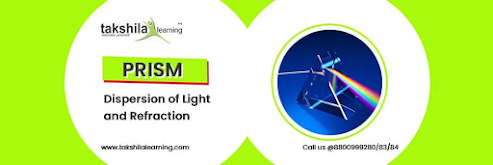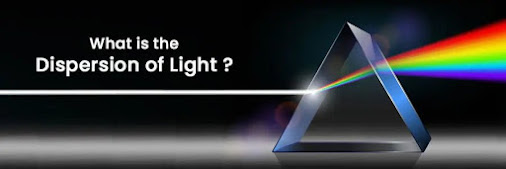 |
What is the dispersion of light in prism explain with diagram
Isn't it true that rainbows are the most beautiful natural phenomenon on the planet? It seems to be flawless! Isn't that so? Have you ever found that rainbow-like phenomena can also be seen in prisms and crystals? What causes this to happen? This is due to a phenomenon known as 'Dispersion of Light,' which occurs in conjunction with refraction. Let's take a closer look at this further down.
This article deals with CHAPTER 11: Light-Reflection and Refraction following topics regarding the dispersion of light through a prism.
What is the dispersion of light?
- How is light refracted through a glass prism?
- Why does light split into its spectrum of colors in a prism but not in a glass slab?
- What is the significance of the dispersion of light into its spectrum of colors?
What is a prism?
A prism is a solid three-dimensional structure with equal ends on both sides. It's made up of flat faces, equal bases, and cross-sections that are identical. The prisms' faces are essentially parallel or rectangular. Prisms may have triangles, circles, rectangles, or some other one-way polygon as their base. A pentagon prism, for example, has two pentagon bases and five rectangular faces.
What is Prism shape?
The prism has a solid form (triangle, square, rectangle, etc.) with two equal edges and a smooth face or surface. It's called a triangular prism since the cross-section looks like a triangle. The manure in the form of a prism does not exist. As a result, a prism may be a square, rectangular, pentagon, or another polygon form, but not circular.
What is the dispersion of light?
When white light passes through a prism, it splits into a spectrum of its colors (violet, indigo, blue, green, yellow, orange, and red, respectively) into white light. Its splitting process is called scattering.
Why light in a prism divides into a spectrum of its colors, but not into a glass slab?
In fact, light spreads across the spectrum of colors on a glass slab. If we look in a particular way we can see it. You should know something about refractive indices before we proceed. They do not exist permanently. They vary according to the frequency and wavelength of light.
Now, for white light to pass through a glass slab or through glass, it is not once, but twice. It moves first from the air to the glass and then from the glass to the air. In the first case of refraction, it slows down, in the second it straightens?
So what happens to a glass slab? All light rays are slow and move at the same rate because both surfaces are parallel. So, to an observer, the white light seems to have entered and exited the slab. But the case is different in a prism.
The surfaces are not parallel to each other, so the light rays emitted from the prism eventually follow the path of separation from each other, giving a scattering effect.
These are some of the examples learn more about the Reflection and Refraction of light here or Download NCERT Solutions Class 10 Science Chapter 10 Light Reflection and Refraction
Takshila Learning provides Live Online Class 10 CBSE/ICSE. We provide the best Online Tuition classes for Class 10 CBSE/ICSE Classes and other classes too that comprise Animated Video lectures and Live Online Classes. Book Free Demo Now, Visit Takshila Learning OR Call Us @ 8800999280/83/84

Comments
Post a Comment
Thank you we will contact ASAP.